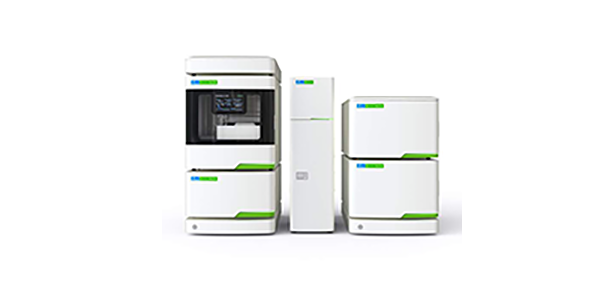
What tutorials are included?
 Tutorial 1: Introduction to HPLC
Tutorial 1: Introduction to HPLC
by Pamela A. Perrone, Ph.D., Global Support and Trainer, PerkinElmer
This presentation is the first in a series that will introduce you to the most widely used analytical technique in the world – high performance liquid chromatography (HPLC). HPLC is a separation technique that allows you to separate, identify, and quantitate the components in a sample. The objective of this session is to provide you with an entry level understanding of this technique. Topics to be discussed include chromatographic theory, the different modes of HPLC, a generic look at HPLC instrumentation, and where HPLC is used. Tutorial 2: LC Column Selection
Tutorial 2: LC Column Selection
by Matthew Przybyciel, Ph.D., Product Development Leader, PerkinElmer
One of the key features in developing a HPLC chromatographic method is the selection HPLC column. It is the focus of this presentation to review the key factors that go into HPLC column selection. These factors include column length, column diameter, particle size of the column packing media, pore size of the column packing media, column type, and stationary phase of the packing media. We explain how column selection can be a match in developing an optimized separation of analyte classes and ultimately how this selection can help ensure a robust separation method. We show how practical compromises can be made in selecting the best column for required separation. Tutorial 3: Choosing the Right HPLC detector
Tutorial 3: Choosing the Right HPLC detector
by Adrian Garcia Sega, Application Scientist, PerkinElmer
In this session, we will explore the most common detectors for high performance liquid chromatography (HPLC). The presentation will focus primarily on optical detection, such as UV/Vis, photodiode array, fluorescence, and refractive index detectors, however other HPLC detectors will also be considered. The objective of this presentation is to provide a basic understanding of the theory of operation, advantages and disadvantages of these detectors, and what to consider when choosing a detector for a particular analysis. Common application examples will be given. Tutorial 4: Basics of HPLC Troubleshooting
Tutorial 4: Basics of HPLC Troubleshooting
by Jamie Foss, Product Manager - LC, PerkinElmer
Presented in a Q&A format, this session of our 'LC Learning Series' will explore some of the most common issues/problems encountered in the HPLC lab. As the most important diagnostic tool for HPLC is monitoring the pump pressure, several examples of pressure issues will be discussed. Other problems, such as retention time and peak area irreproducibility and detector baseline noise or drift, will also be presented. The aim of this session is to provide some basic troubleshooting fundamentals to build confidence in recognizing when issues are occurring and how to resolve them to improve instrument uptime and laboratory productivity.
To access these free tutorials complete the form to the right of this page.
Plus access the bonus content ...
 How-to Guide — HPLC: Choosing the Right Detector
How-to Guide — HPLC: Choosing the Right Detector
With reference to applications using the PerkinElmer LC 300™ HPLC/UHPLC System, this guide will highlight the different detectors available and provide tips to help you choose the most appropriate detector for your liquid chromatography application.
 Brochure — LC 300 HPLC and UHPLC Systems
Brochure — LC 300 HPLC and UHPLC Systems
This brochure introduces the PerkinElmer LC 300 — the latest LC to step off the production line. With features and benefits such as five available detectors, ultraprecise gradient flows, low dispersion, and new Simplicity™Chrom CDS software, the LC 300 systems provide improved workflows, throughput, and usability. Whether you need the ruggedness of conventional HPLC, or the proven benefits of UHPLC, the LC 300 has you covered.
 Poster — Selecting The Right HPLC Column
Poster — Selecting The Right HPLC Column
This useful poster will help you select the right HPLC column for your application.
 Poster — Selecting Your HPLC Column
Poster — Selecting Your HPLC Column
Discover how the right column makes all the difference.


